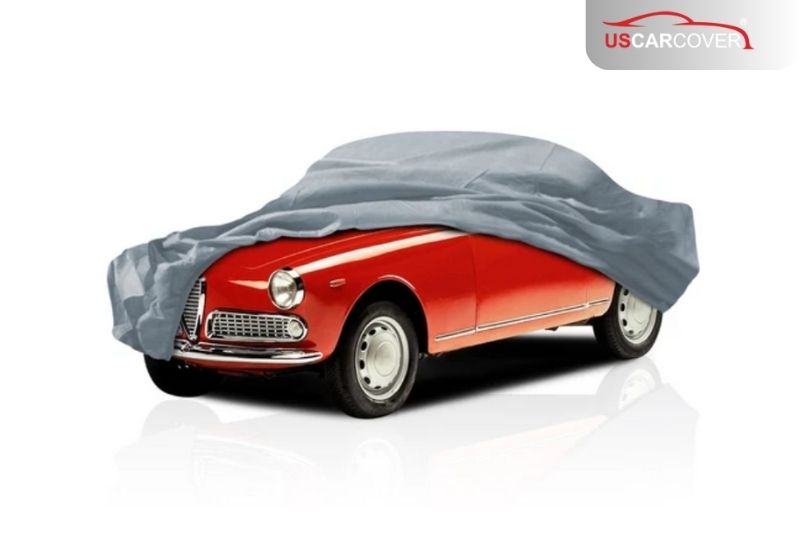
Austin-Healey is a legendary British sports car marque founded in 1952 through a joint venture between Austin of the British Motor Corporation and Donald Healey’s sports car firm. The partnership between Leonard Lord and racer engineer Donald Healey birthed distinctive, affordable high performance roadsters that made waves through the 1950s and 1960s. Although production lasted only about two decades and ended in 1972, Austin-Healey left a rich legacy that collectors still celebrate worldwide.
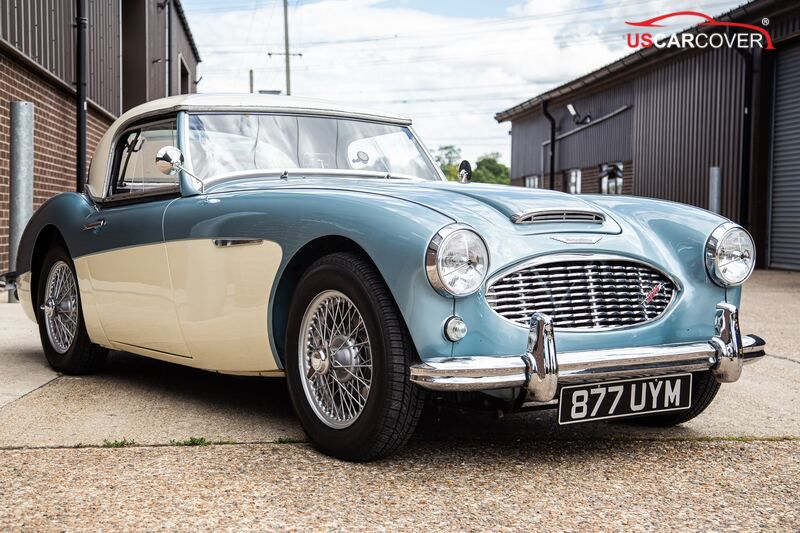
Related Articles: Austin Car Cover - A U.S climate checklist what to use
A quick introduction and history
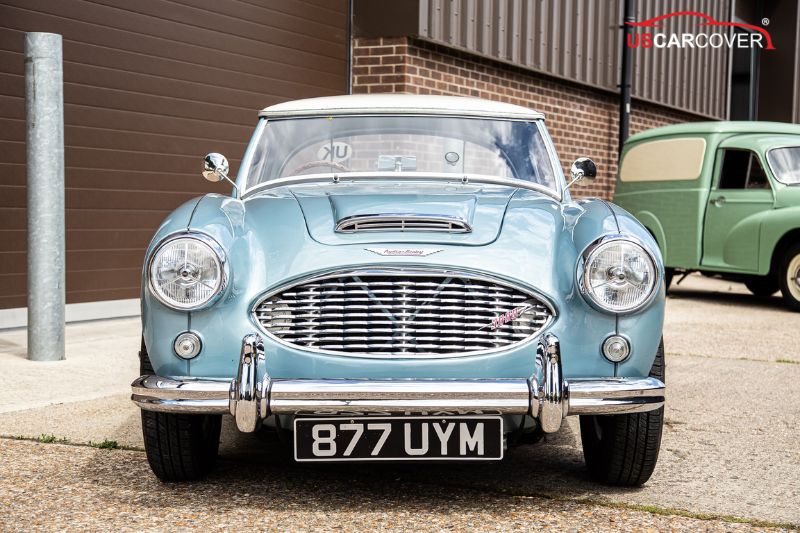
Before we talk protection and care, it helps to know what makes an Austin-Healey special in the first place. This short timeline orients you to the brand’s roots so the rest of the guide lands with context. Austin-Healey arrived in 1952, during a postwar boom in personal sports cars. Donald Healey teamed with Austin to create fast, handsome roadsters that regular enthusiasts could afford. The first Austin-Healey appeared at the 1952 London Motor Show and drew immediate attention for its beauty and performance. Through the 1950s and 1960s the brand kept refining its cars and earned credibility in motorsport at events like Le Mans, Sebring, and rallying. In 1972, as industry structures shifted and the 20 year agreement ended, production ceased. The cars that remain are viewed as rolling pieces of British motoring heritage.
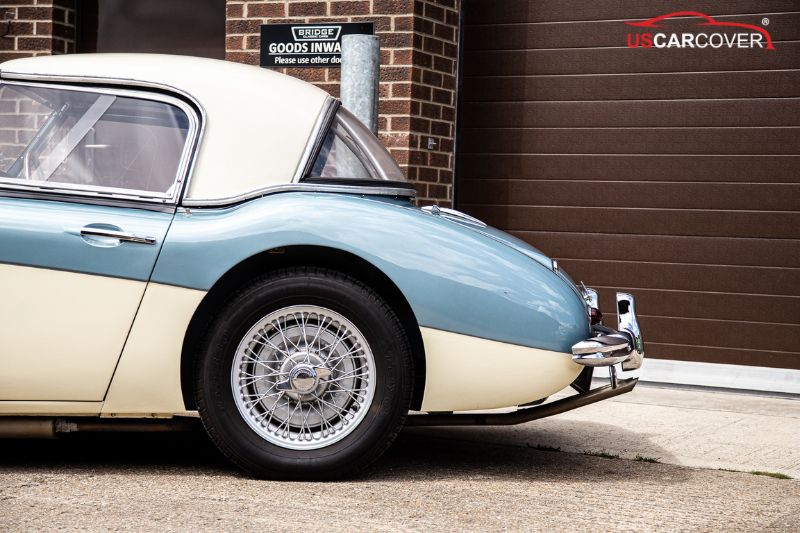
Related Articles: BMW Car Cover Why a car in the garage still deteriorates and how to stop it at the source
Austin-Healey model families
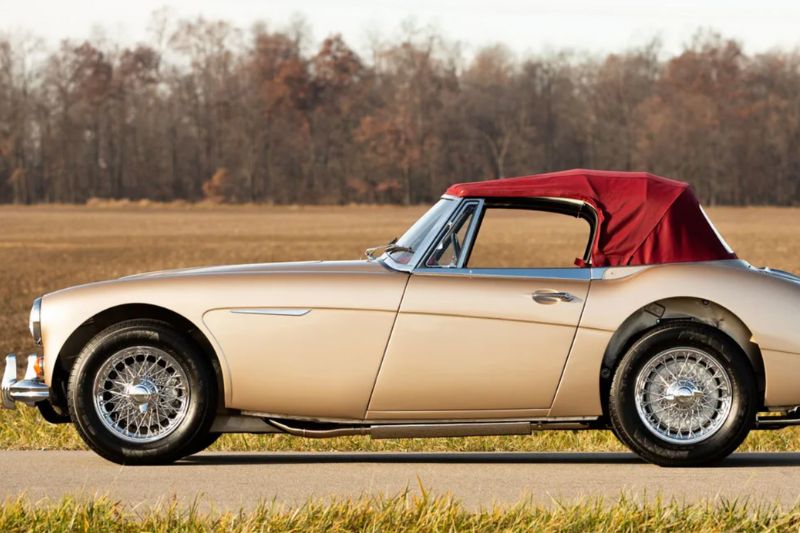
When you shop accessories like car covers, you will often filter by model and generation. Use this quick map of the lineup to identify exactly which Austin-Healey you own.
- Austin-Healey 100 (BN1 and BN2, 1953 to 1956): The original 2 seat roadster named for its 100 mph capability. The limited run 100S was a racing special.
- Austin-Healey 100-6 (BN4 and BN6, 1956 to 1959): An evolution with a 6 cylinder engine and available 2+2 seating, keeping the classic roadster feel.
- Austin-Healey 3000 (Mk I, Mk II, Mk III; 1959 to 1967): The famous “big Healey” with a 2.9 liter inline six, offered as two seat and 2+2 soft top versions.
- Austin-Healey Sprite (Mk I to Mk IV; 1958 to 1971): The small, affordable roadster. The Mk I earned the “Frogeye” or “Bugeye” nickname for its distinctive upright headlights.
Related Articles: Auburn Car Cover 7 things 90% of owners overlook
Popular and most loved Austin-Healey models
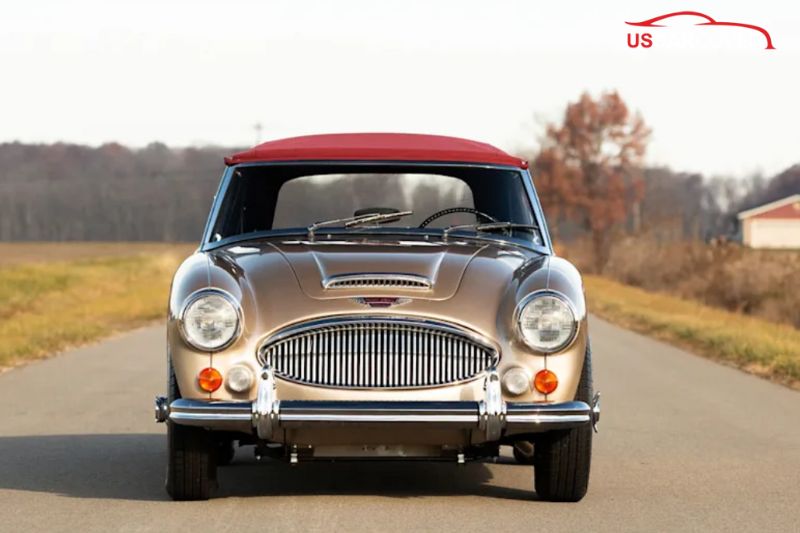
If you are prioritizing which cars are most common at shows and in collections, start here. These favorites also tend to have the widest range of custom fit accessories available. The spotlight often falls on the Austin-Healey 3000, especially the Mk III BJ8, prized for elegant styling, stronger mechanicals, and grand touring comfort. Early Austin-Healey 100 models appeal for their purity and historical significance, while the rare 100S racing cars are blue chip collectibles. The cheerful Sprite Mk I remains beloved for its character and accessibility, giving many enthusiasts their first taste of classic British sports car ownership.
Current market values at a glance
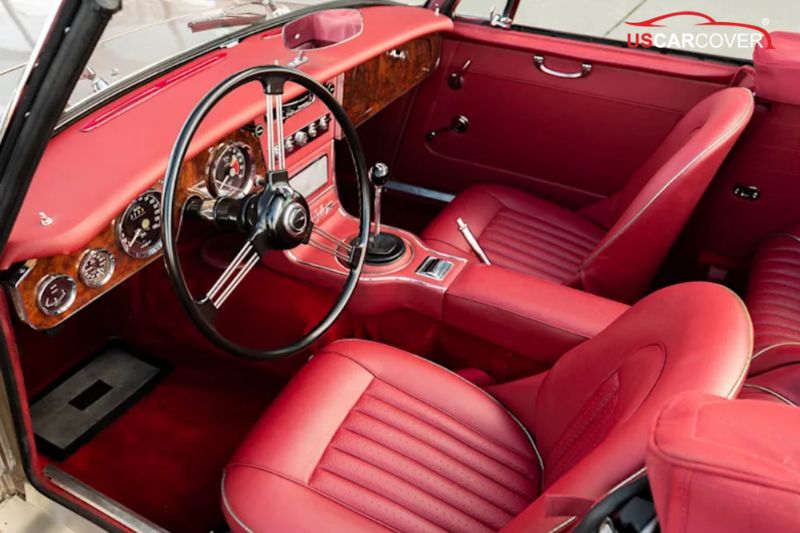
Protection choices often track with value. Seeing the price spectrum helps you decide how much coverage and storage diligence your Austin-Healey deserves. Values vary widely by rarity, provenance, and condition. As a rough guide, many Austin-Healey 3000 cars trade around the mid five figures in driver condition. Project cars and non original examples can be far cheaper, while top tier, historically significant cars can command six or even seven figures at major auctions. The spread reflects a simple truth of classics: originality, documentation, and careful preservation drive value.
Related Articles: Aston Martin Car Cover - Why Every Aston Marin Owner Needs This Gift
Why protecting an Austin-Healey matters
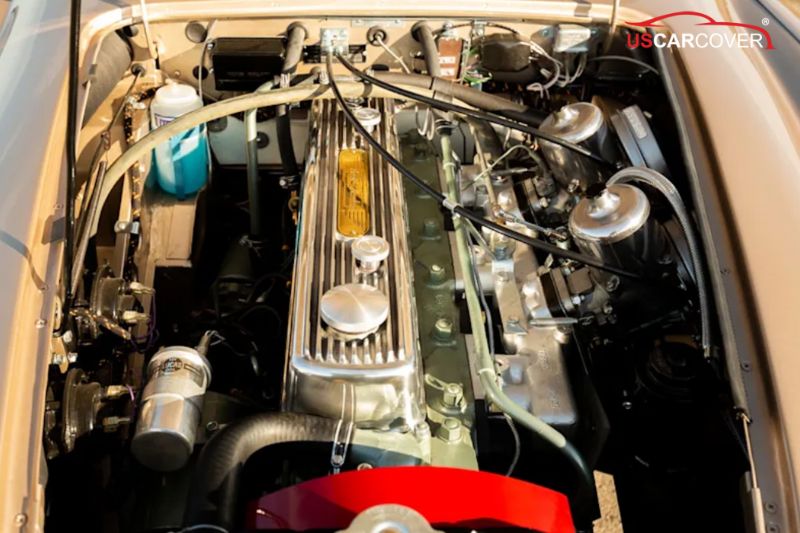
Classic finishes are gorgeous but vulnerable. Here is what everyday sun, weather, and storage can do if you do not put basic protection in place. Classic materials and finishes are more vulnerable than modern ones. Sunlight and UV can fade paint and crack interior trim. Bird droppings and tree sap can etch clearcoat quickly, especially under heat. Moisture encourages corrosion in steel panels, fasteners, and underbody seams. Even dust accumulation in a garage can act like fine sandpaper as it’s wiped away, dulling the shine over time. Protecting the car preserves originality, prevents avoidable repairs, and sustains collectible value.
Common ways to protect an Austin-Healey
Think of protection as layered defense. Combine storage, cleaning, and surface care so your Austin-Healey stays show ready with less work:
- Store indoors whenever possible in a clean, dry, well ventilated space.
- Wash gently and promptly remove contaminants like sap or bird droppings.
- Apply quality wax or a ceramic coating to add a sacrificial protective layer.
- Manage humidity to discourage rust and mold in leather, wood, and fabrics.
- Use a purpose built car cover whenever the car sits, indoors or outdoors.
Why a car cover is a smart move for Austin-Healey
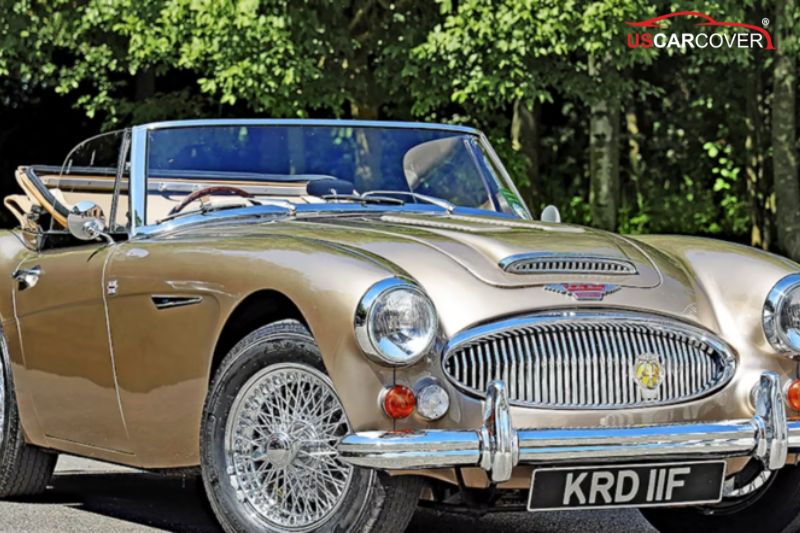
Among all protections, a well chosen cover delivers outsized benefits per dollar. Here are the practical wins you will notice right away:
- Blocks dust and moisture: A good cover keeps dust off paint and limits condensation, reducing the chance of micro scratches and surface corrosion.
- Shields from scuffs: The cover acts like a soft buffer against minor bumps in shared garages and tight spaces.
- Protects from UV and heat: UV resistant fabrics help prevent paint fade and interior cracking while keeping cabin temps lower.
- Preserves value: Clean, unfaded paint and intact interior surfaces help your Austin-Healey hold its place in the collector market.
- Cost effective and portable: Compared with building storage, a quality cover is a small investment you can use anywhere.
How to use a car cover correctly for Austin-Healey
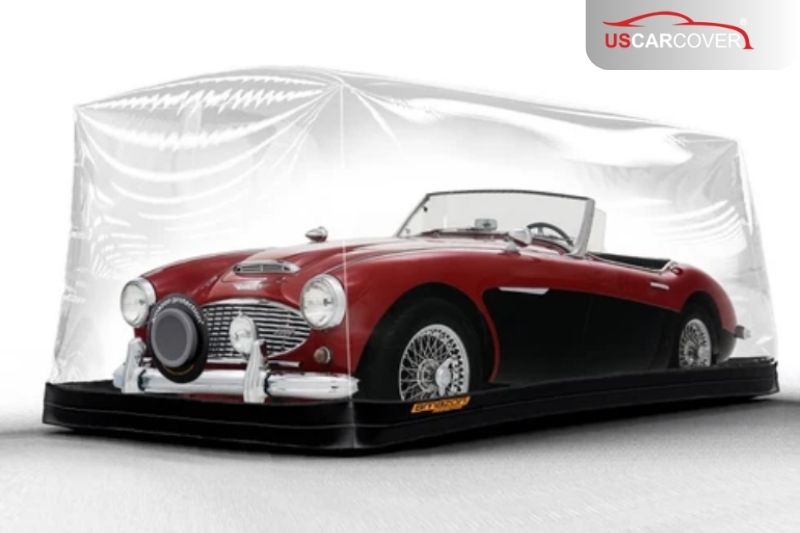
A great cover used the wrong way can still cause swirl marks. Follow this simple routine to get protection without unintended scratches:
- Choose a custom fit cover sized specifically for your model so it hugs the body and resists flapping in wind. Look for breathable, multi layer fabric with a soft inner liner.
- Always cover a clean and dry car. Trapping grit under the cover can cause swirl marks and fine scratches.
- Install from the roofline first, then pull the cover evenly over the front and rear. Seat the elastic hems and secure any straps to prevent movement.
- Avoid covering a wet car or storing a wet cover. Let both car and cover dry to prevent moisture damage or mildew.
- Clean the cover periodically with mild soap and water, then dry fully before folding and storing in a dry place.
An Austin-Healey is more than transportation. It is craftsmanship, history, and the joy of analog driving. Protecting it from sun, weather, dust, and accidental scuffs is essential to keep it beautiful and road ready for years. A thoughtful routine paired with the right car cover preserves originality, reduces detailing costs, and supports long term value. If you own or are shopping for an Austin-Healey, plan for protection from day one so your classic continues to shine every time you lift the cover
